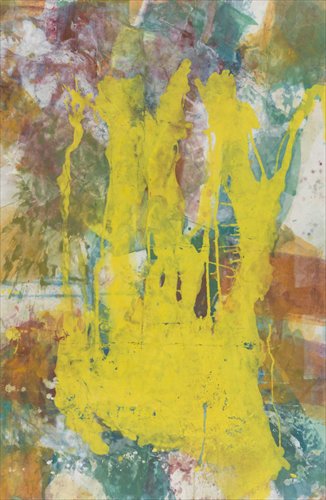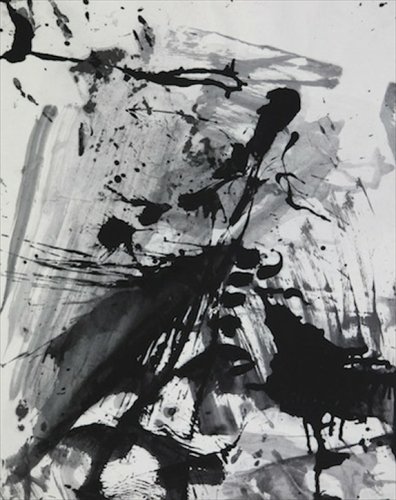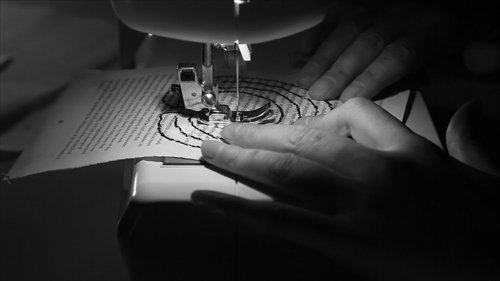Overseas engagements
Group exhibition sees Chinese artists re-engaging with their artistic traditions after time abroad
Seeing the medium of paper as a departure point, Pearl Lam Galleries Shanghai's new group exhibition Theatre of Paper sets out to examine six Chinese artists' identities and their takes on Chinese art traditions through recent paintings, installations and video works.
Xia Jing, curator at the gallery, picked artists that were born in the 1950s and 1960s and have experience overseas. Some moved to the West in the late 1980s or early 1990s, while others had briefer exchanges.
One important dimension of the exhibition is how these artists have considered and reconsidered Chinese art tradition over the past 30 years.
"When contemporary art first bloomed in China back in the 1980s, these artists were eager to study and absorb Western culture and art movements, and very often kept a distance from tradition," Xia said.
"Yet, from the 1990s, and especially after they moved overseas and became foreign artists, they strategically protected the tradition."
Having gone through a "long-time conflict" between the traditions of their home and host countries, Xia said, in the late 1990s and early 2000s these artists found a more mature language.
"They are more at ease with tradition. They no longer think about whether it belongs to the East or the West, and whether they should refuse or accept it. Tradition is more like something running in their blood that slowly shows up in their works," Xia said.

The exhibition begins with 61-year-old Qin Yufen's In Search of Lost Time series (pictured above) featuring mineral pigments and ink on xuan paper - a kind of rice paper popular among Chinese artists.
Blocks and blotches of rouge and watery green dance across one piece, in a way that is vivid yet serene.
Conceptual ink painting was already the focus of Qin's debut exhibition in Germany, where she lived from 1986 to 1994.
Also on display is her installation, Extension, an open scroll of xuan paper rolled on a wooden axis, in response to her earliest conceptual ink paintings.
At the installation's center is an electric wire, something Qin frequently uses in her famed sound installation works, that represents actual lines on ink paintings.
Also dealing with ink and xuan paper is the 56-year-old Lan Zhenghui, who shot to fame in the 1980s with his bold installations and later experimented with water ink painting for more than 20 years.
Over the 1990s, he quit art to do business. In his spare time, he researched the structure of symbols.
In the early 2000s, he made his artistic comeback with calligraphic ink paintings that are marked by their ink-splash strokes, which are monumental in both size and force. He calls the style "surface writing."

His two exhibits, E65 and E119 (above), are examples of this peculiar methodology. Ink not only dominates the paper, but seems to grow from the surface and continue a patterned life of its own.
Meanwhile, the high-profile artist Qiu Deshu directly subverts the medium of xuan paper itself. He tears the paper up, reconfiguring the various pieces to create "fissures" on top of a colored layer, as well as carving and rubbing the papers.
One piece resembles snow-tipped mountains by a clear river. The distinctive paper texture throws in a rough beauty that is perfect for the theme.
Elsewhere, Shen Chen presents white-and-gray-tone pieces of acrylic on canvas composed of simple, broad and repetitive brushstrokes.
"Overlapping parts of the strokes form black vertical strips, while the space between brushstrokes makes vacant whiteness. I use both the entire brush and the corner of a brush," Shen explained.
"Shen did various experiments in the 1990s, and eventually found she had a natural intimacy with calligraphy and could not do without it. She focuses on the repetitive application of the brush to achieve meditation and self-purification," Xia noted.

Theatre of Paper examines six Chinese artists' identities and their takes on Chinese art traditions through recent works. Photos: Courtesy of Pearl Lam Galleries Shanghai
Last but not least, Amsterdam-based Ni Haifeng's video installation (above) and patterns sewn on paper are unmissable.
He asks a seamstress to sew her own patterns in four pages of an art history book based on what she can understand from the material, and the outcome are four semi-naïve, web-like figures.
Here, Ni juxtaposes the social dimension of production and the authoritative writing of art history and sees the laborer in the light of an active maker whose creativity is a form of cultural resistance in a capitalist society.
"Artists play the role of intellectuals to some degree, for it is important that they remain a critical distance from the mainstream, the trend, and the market. With this work, Ni shows he is especially sharp and decisive in objecting to mega-narratives, and richly depicts the changes of tradition," Xia said.
Date: Until January 10, 10:30 am to 7 pm
Venue: Pearl Lam Galleries Shanghai
Address: 181 Jiangxi Road Middle
江西中路181号
Admission: Free
Call 6323-1989 for details